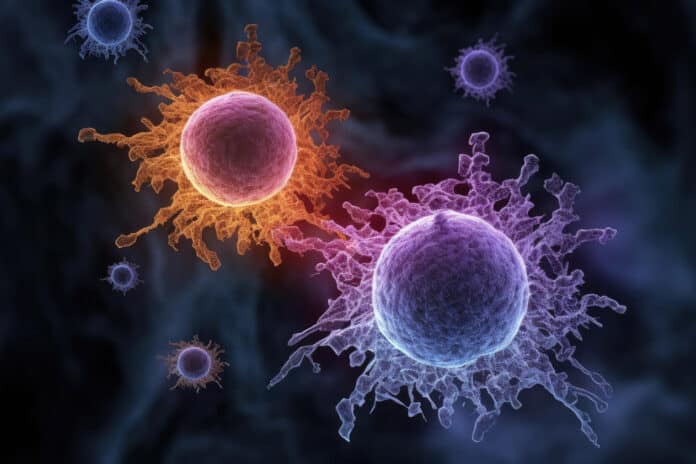Unconventional T cells play an essential role in protective immunity; however, the development of these distinctive cell populations is poorly understood.
Researchers have figured out how one particular sort of immune cell originates in the body, which defends the body against disease and infection. Additionally, a recent study suggests that the discovery may aid in creating other preventative medicines. They have uncovered how these specialized white blood cells operate and can produce an immune response.
Scientists investigated the development of Vγ9Vδ2 T cells, a large population of unconventional γδ T cells found in adults. These cells play essential roles in providing effective immunity against cancer and infection.
Scientists used high-dimensional flow cytometry, transcriptomic analysis, functional assays, and precursor-product experiments to define the development pathway of Vγ9Vδ2 T cells in the postnatal thymus. They identified three distinct stages of development for Vγ9Vδ2 T cells in the postnatal thymus that are defined by the progressive acquisition of functional potential and significant changes in the expression of transcription factors, chemokines, and other surface markers.
Associate Professor Pellicci said, “The study showed for the first time how this organ produced these infection-fighting immune cells.”
“We have large numbers of these specialized cells in our blood and tissues, accumulating as we become adults. Until our study, it was unclear how these cells develop in the body.”
“We have shown how these cells are trained over three stages, like receiving a primary, secondary, and tertiary education, and fully formulate within the thymus. Following this education, the cells are ready to enter the rest of the body and are completely capable of fighting infections.”
Associate Professor Pellicci said previous studies suggested that these immune cells were mainly derived in the liver during a baby’s development in the womb, but this research debunked that theory.
“Many experts assumed that after birth, the thymus played little role in the development of these cells as we age, but we now know this little unsung organ helps the body prepare for a lifetime of good health.”
“The more we know about these cells, the greater the likelihood of unlocking new ways to treat infectious diseases and cancer.”
Journal Reference:
- Louis Perriman, Naeimeh Tavakolinia, Sedigheh Jalali, Shou Li, Peter F Hickey, Daniela Amann-Zalcenstein, William Wing Ho, Tracey M Baldwin, Adam T Piers, Igor E Kostantinov, Jeremy Anderson, Edouard G Stanley, Paul V Licciardi, George Kannourakis, Shalin H Naik, Hui-Fern Koay, Laura K Mackay, Stuart P Berzins and Daniel G Pellicci, ‘A three-stage developmental pathway for human Vγ9Vδ2 T cells within the postnatal thymus,’ Science Immunology. DOI: 10.1126/sciimmunol.abo4365
